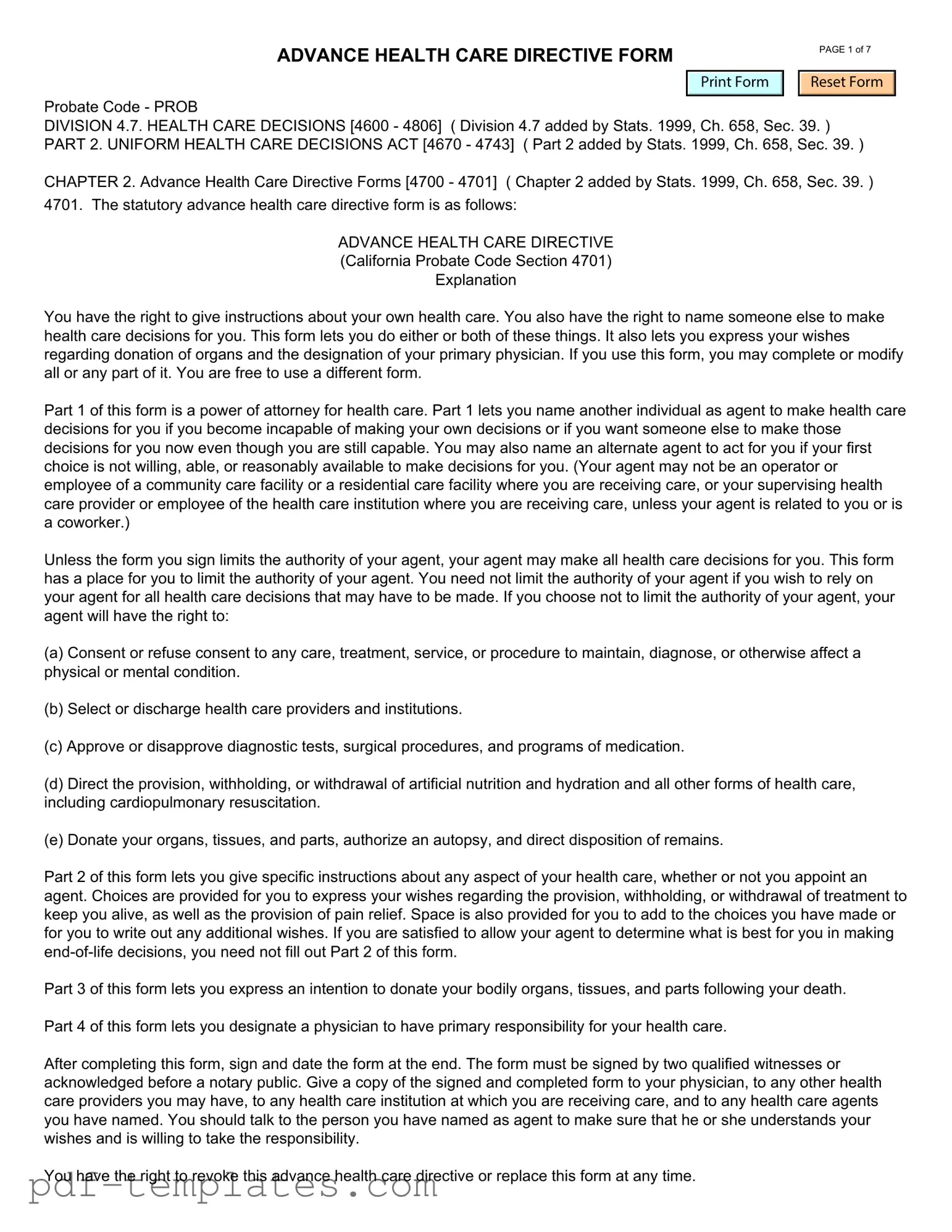The California Advanced Health Care Directive (AHCD) is similar to a Living Will. A Living Will allows individuals to outline their preferences regarding medical treatment in the event they become unable to communicate their wishes. Both documents serve to express a person's healthcare choices and ensure that their values and desires are respected when they cannot advocate for themselves. However, a Living Will typically focuses solely on end-of-life care, while the AHCD can address a broader range of healthcare decisions.
Another document comparable to the AHCD is a Durable Power of Attorney for Healthcare. This document appoints a trusted individual to make healthcare decisions on behalf of the person if they are incapacitated. Like the AHCD, it empowers someone to act in the best interest of the individual. The key difference lies in the AHCD’s inclusion of both healthcare preferences and the designation of a decision-maker, while a Durable Power of Attorney focuses primarily on the appointment of a representative.
Understanding the nuances of the Mechanics Lien California form is crucial for anyone involved in construction or property management. This legal document serves as a safeguard for contractors and suppliers, ensuring they receive payment for their services. Those interested in learning more about the specifics of this form can visit formcalifornia.com/ for detailed information and resources to navigate the filing process effectively.
The Do Not Resuscitate (DNR) order shares similarities with the AHCD in that both documents communicate an individual's wishes regarding medical treatment. A DNR specifically instructs healthcare providers not to perform CPR if the person’s heart stops or they stop breathing. While the AHCD encompasses a wider range of healthcare decisions, the DNR is a specific directive regarding resuscitation efforts, making it a crucial component of end-of-life planning.
The Physician Orders for Life-Sustaining Treatment (POLST) form is another document that aligns with the principles of the AHCD. POLST is designed for individuals with serious illnesses and translates their healthcare preferences into actionable medical orders. Both documents aim to ensure that a person’s wishes are honored, but POLST is more focused on immediate medical interventions, while the AHCD addresses broader healthcare decisions and future scenarios.
A Health Care Proxy is akin to the AHCD as it allows individuals to designate someone to make healthcare decisions on their behalf. This document ensures that a trusted person can advocate for the individual’s preferences when they are unable to do so themselves. While the AHCD includes both the appointment of a proxy and detailed healthcare wishes, the Health Care Proxy primarily focuses on the appointment aspect.
The Mental Health Advance Directive serves a similar purpose by allowing individuals to outline their preferences regarding mental health treatment. This document can specify treatment options, preferred providers, and other relevant instructions. Like the AHCD, it empowers individuals to make their healthcare wishes known, but it is specifically tailored to mental health issues, addressing scenarios that the AHCD may not cover.
Finally, the Living Trust can be compared to the AHCD in terms of planning for future needs. A Living Trust is primarily focused on the management and distribution of assets after death. However, both documents reflect an individual’s intent regarding their personal wishes and can provide peace of mind. While the AHCD is centered on healthcare decisions, a Living Trust addresses financial and estate planning, highlighting the importance of comprehensive planning for the future.
